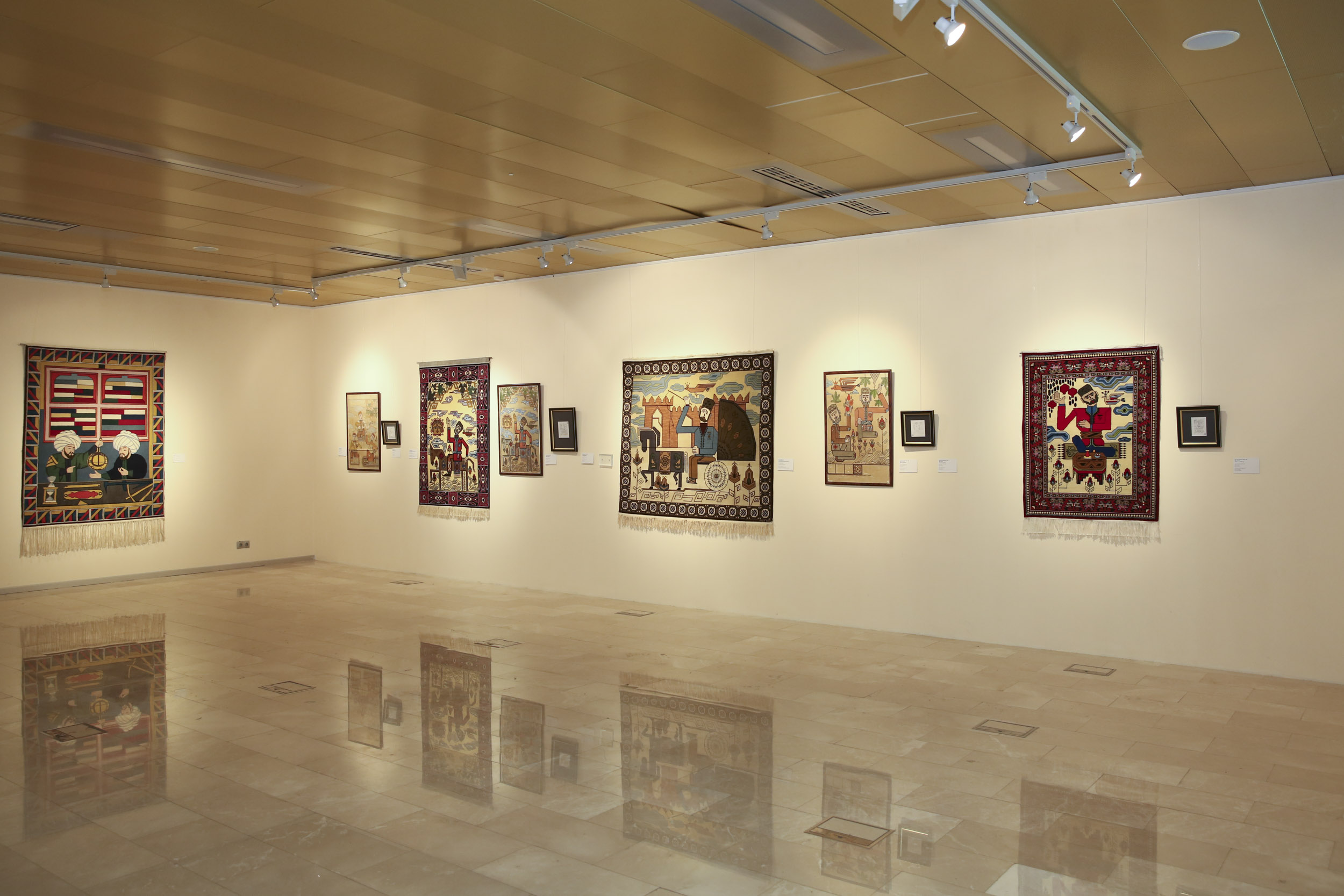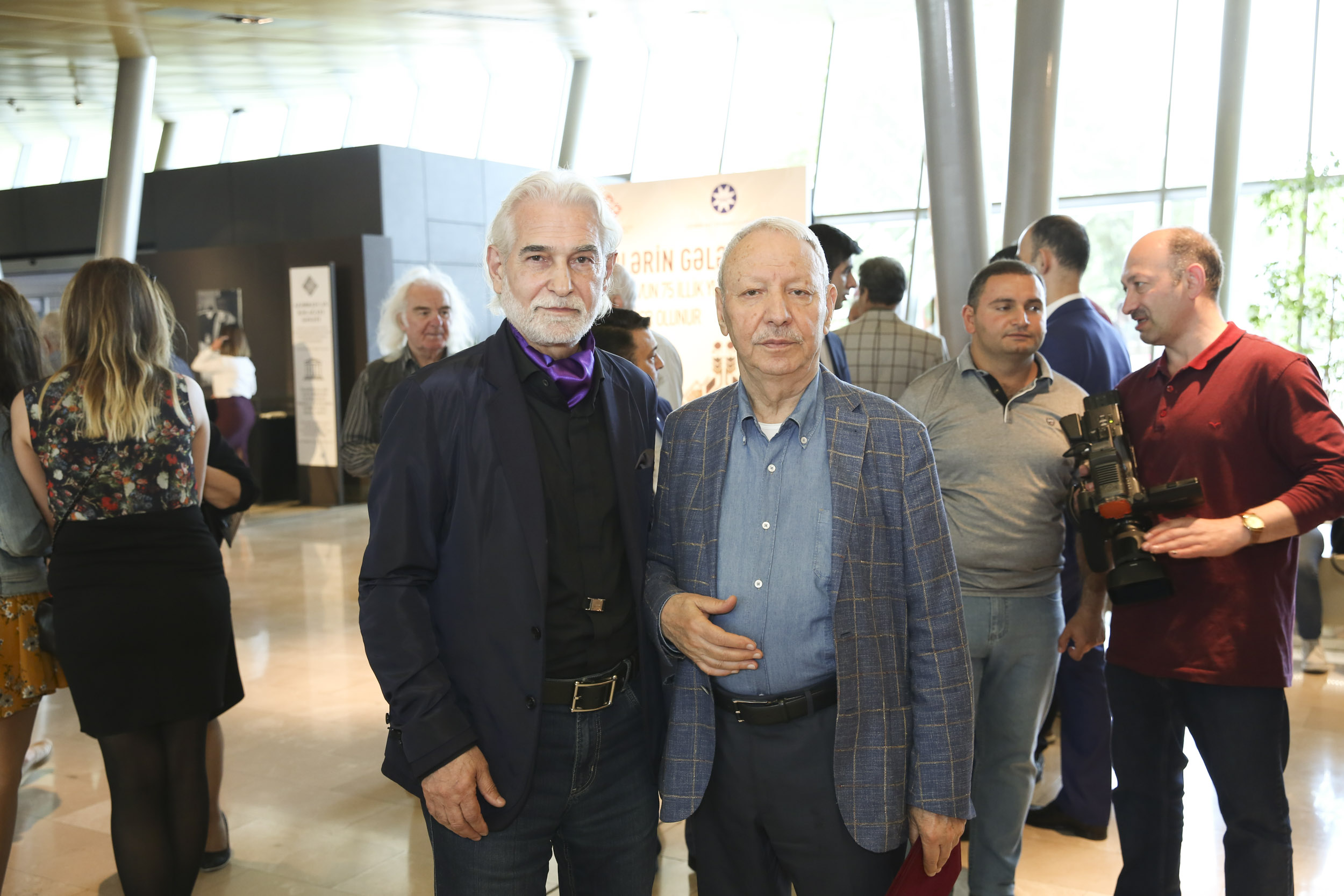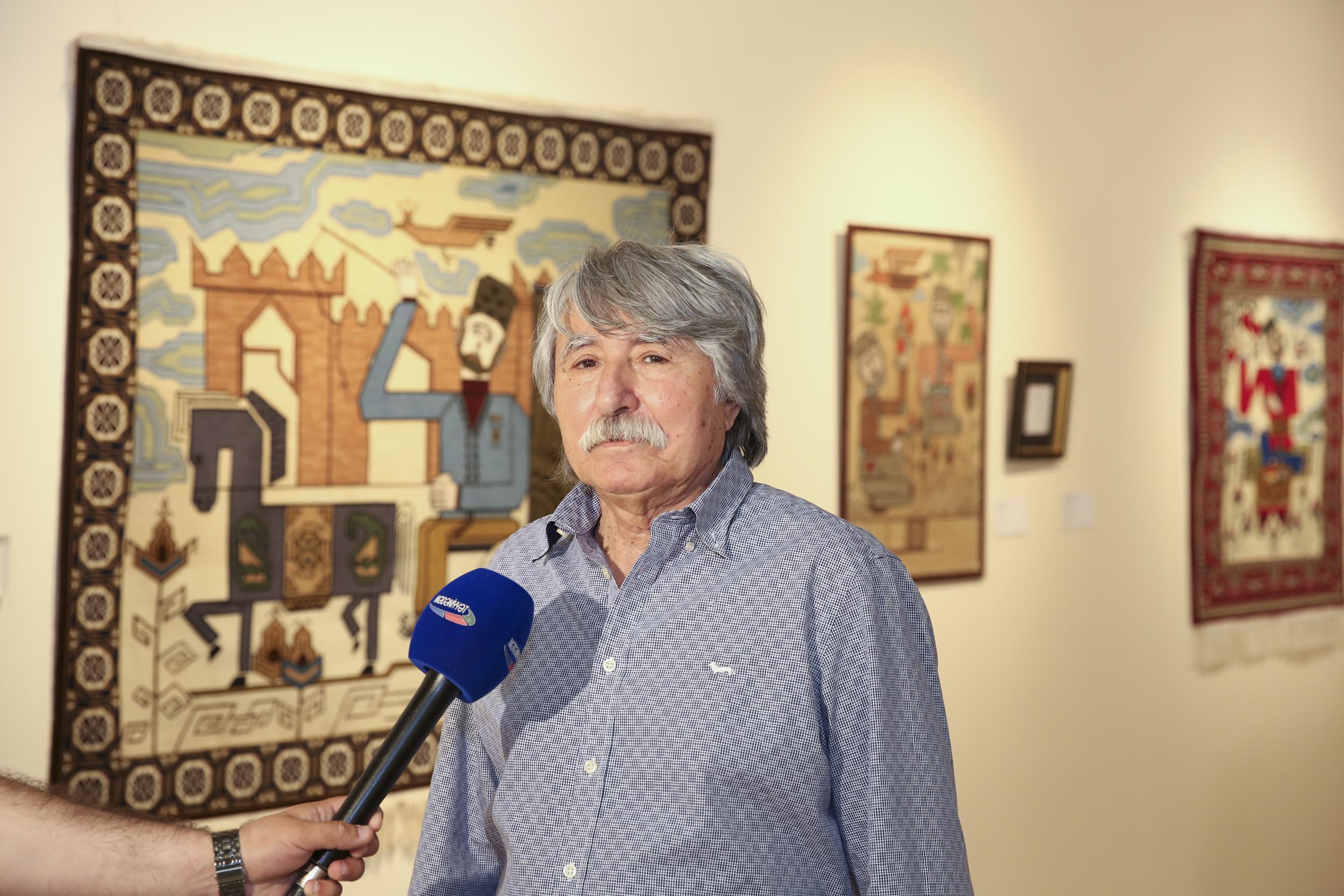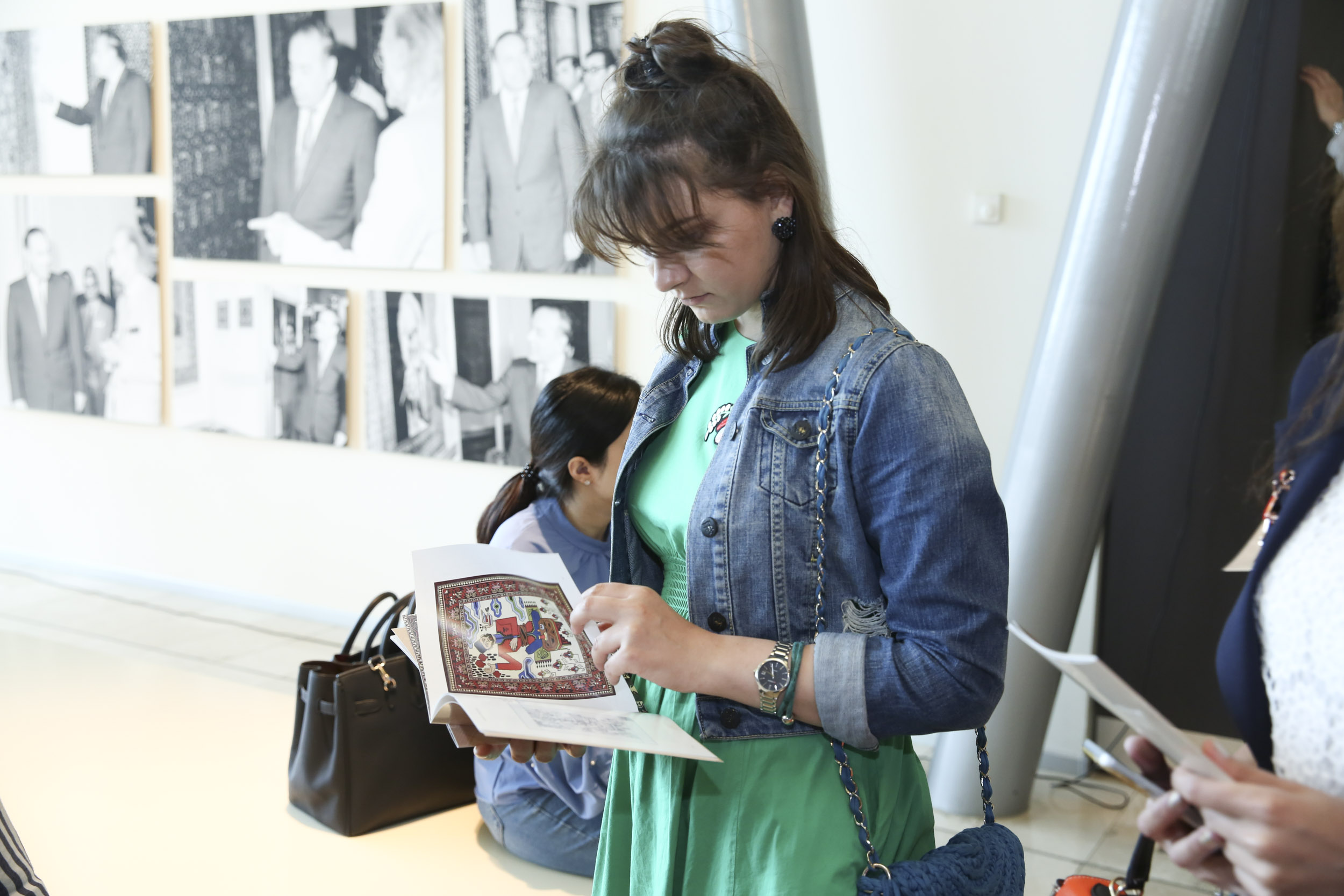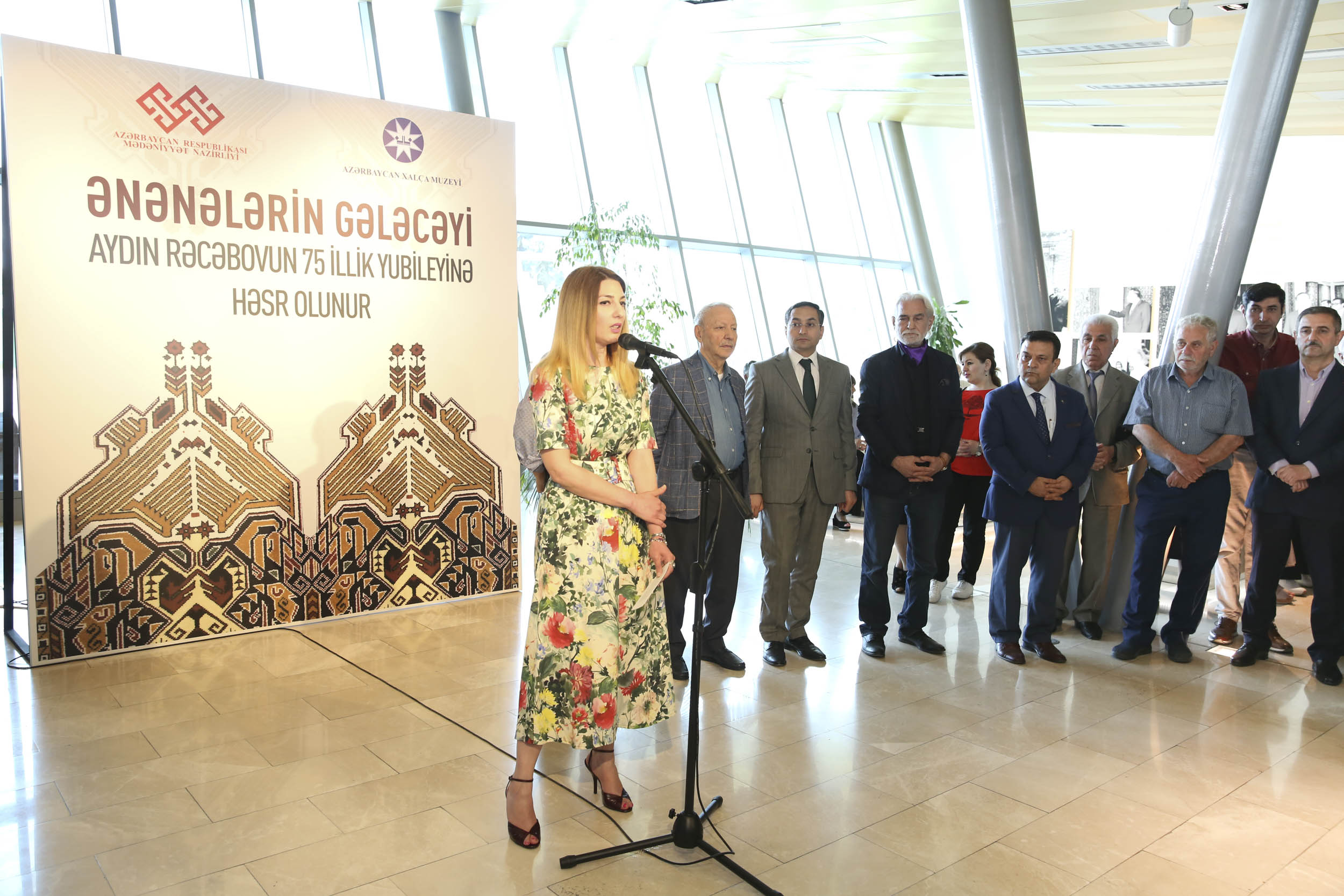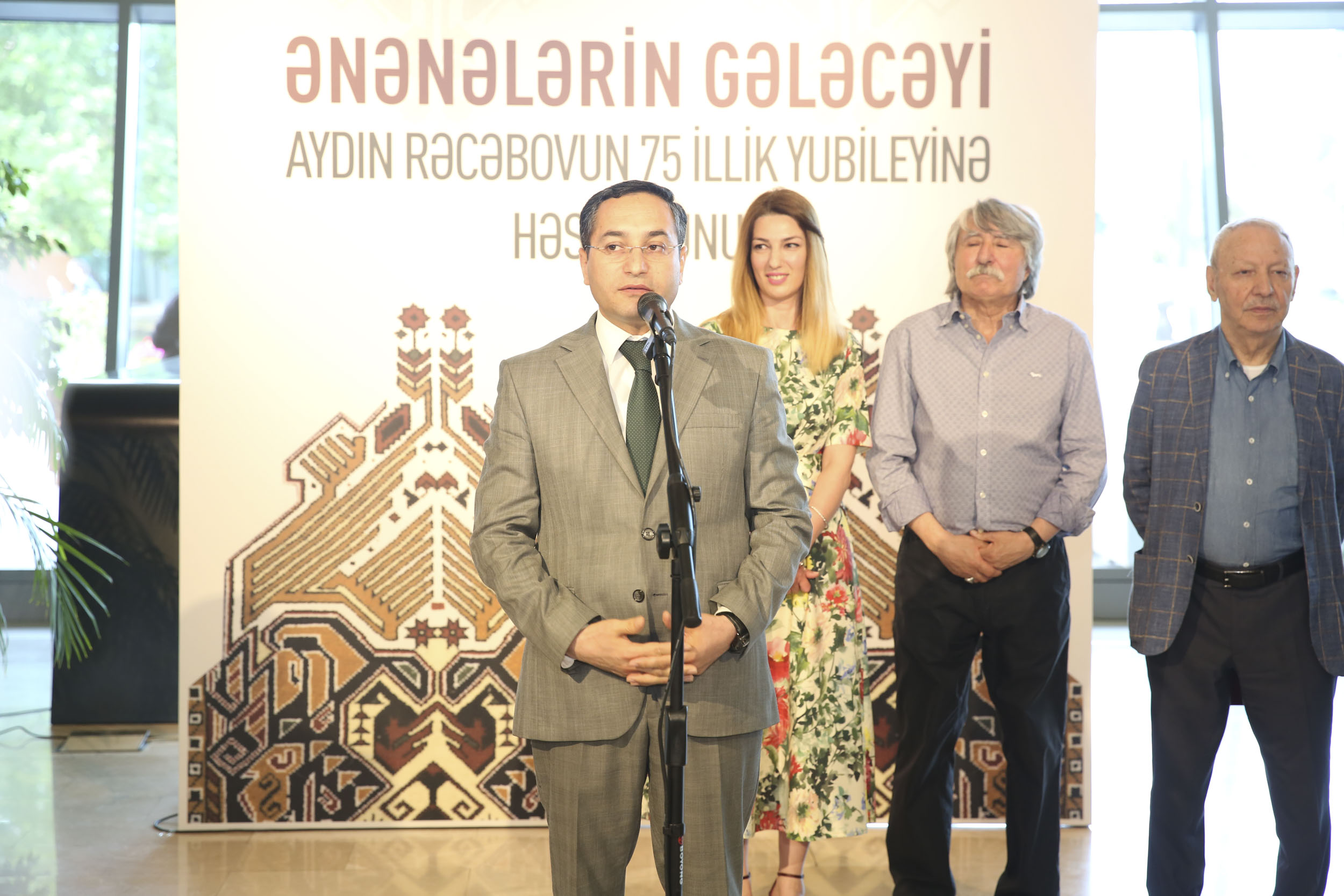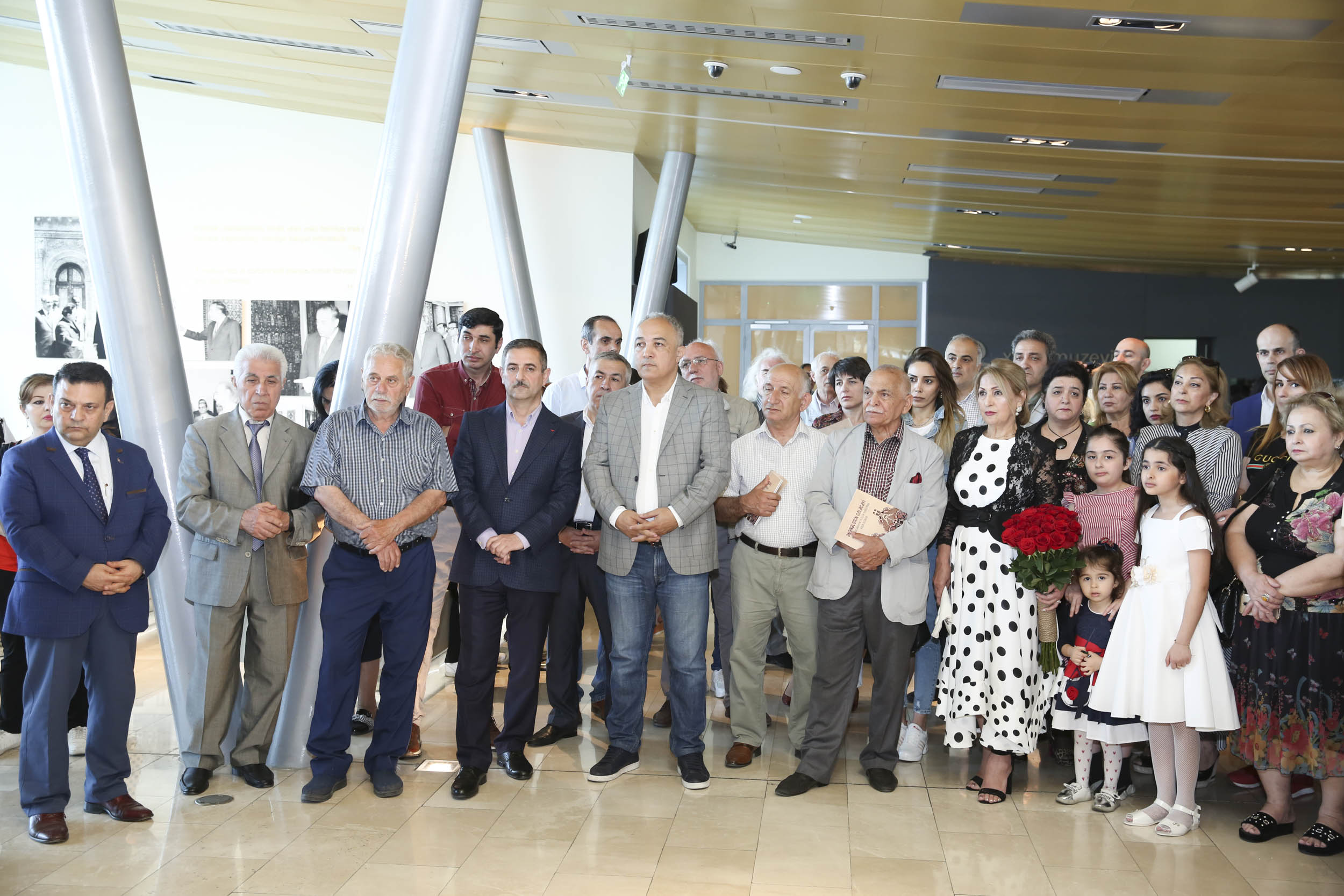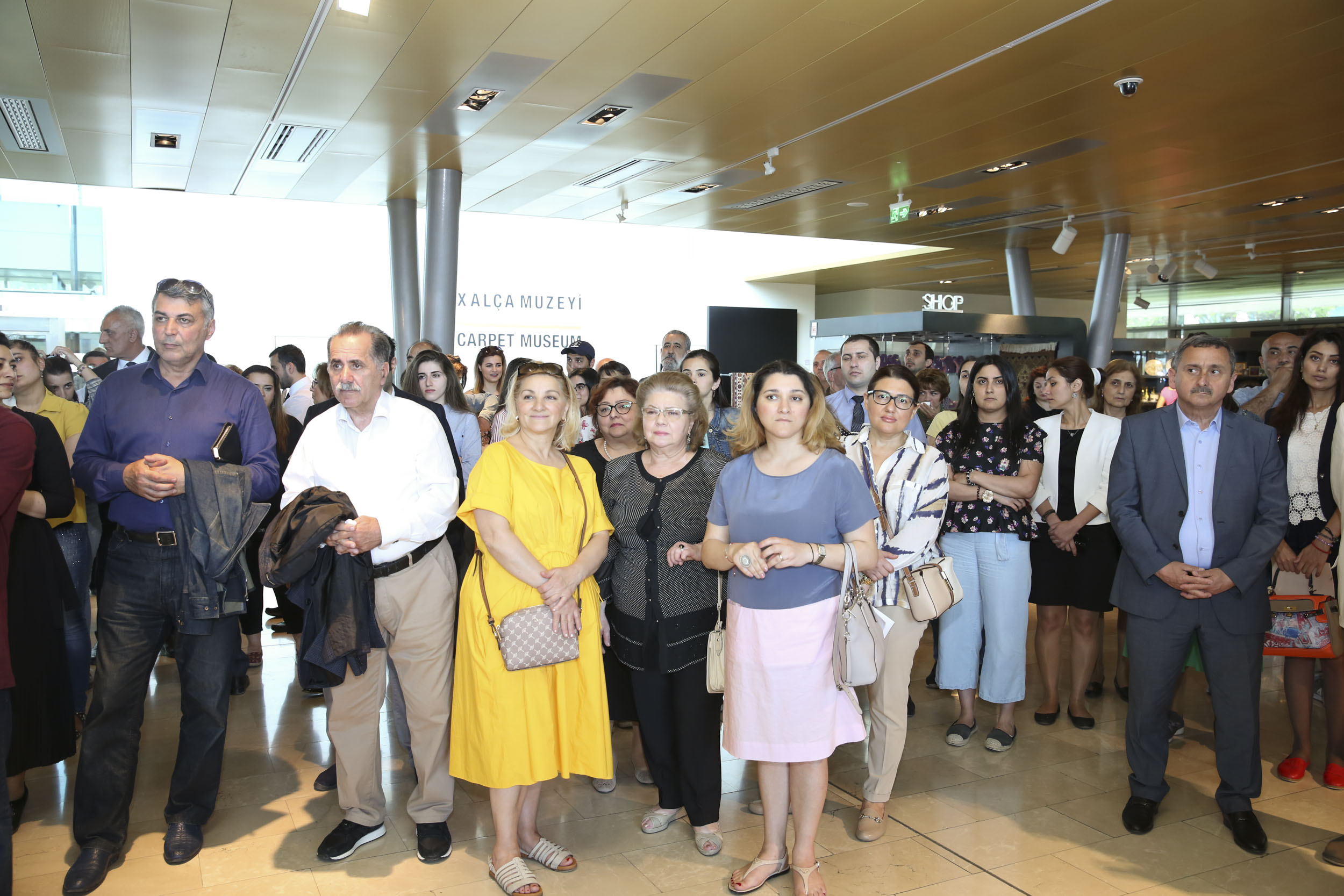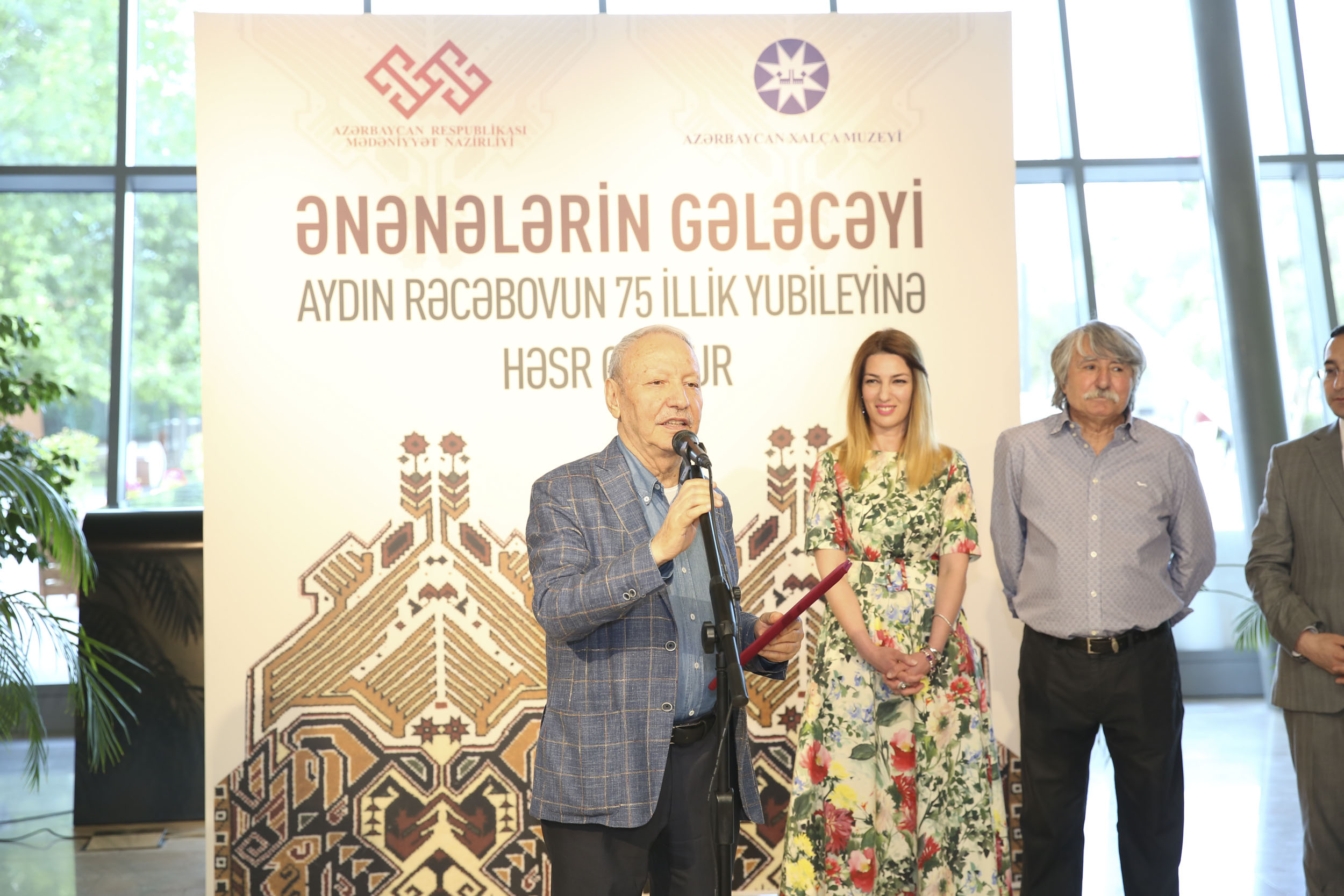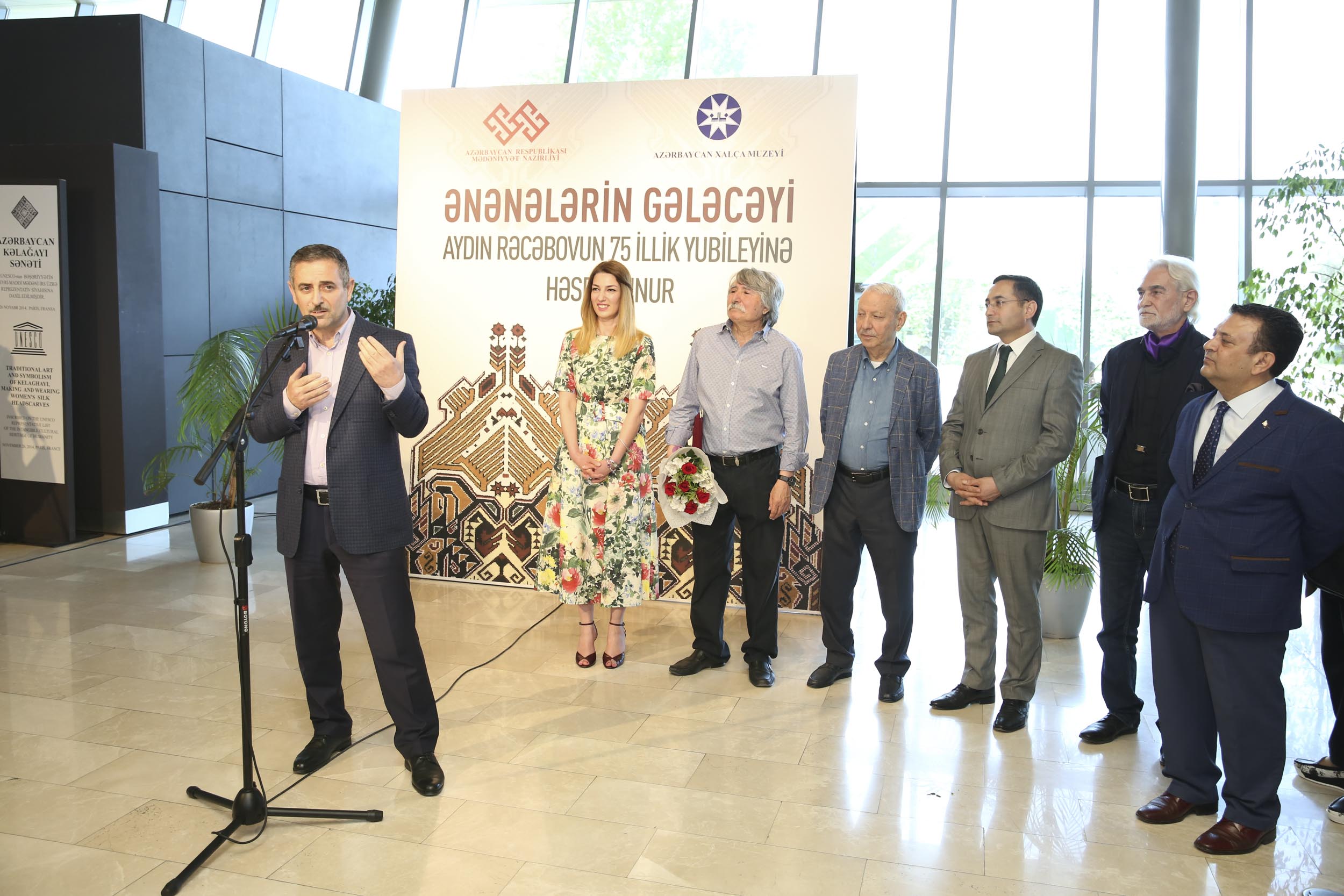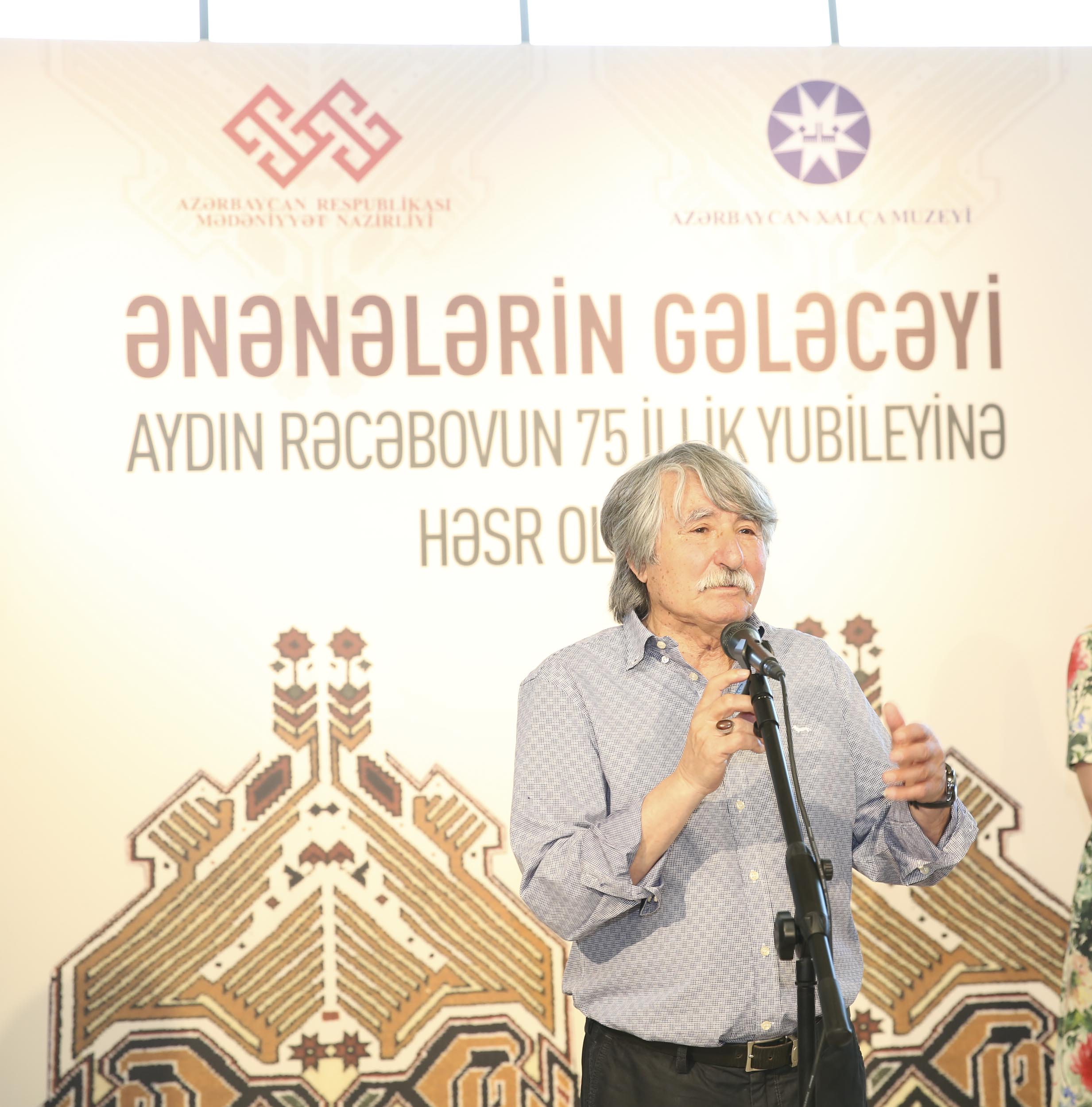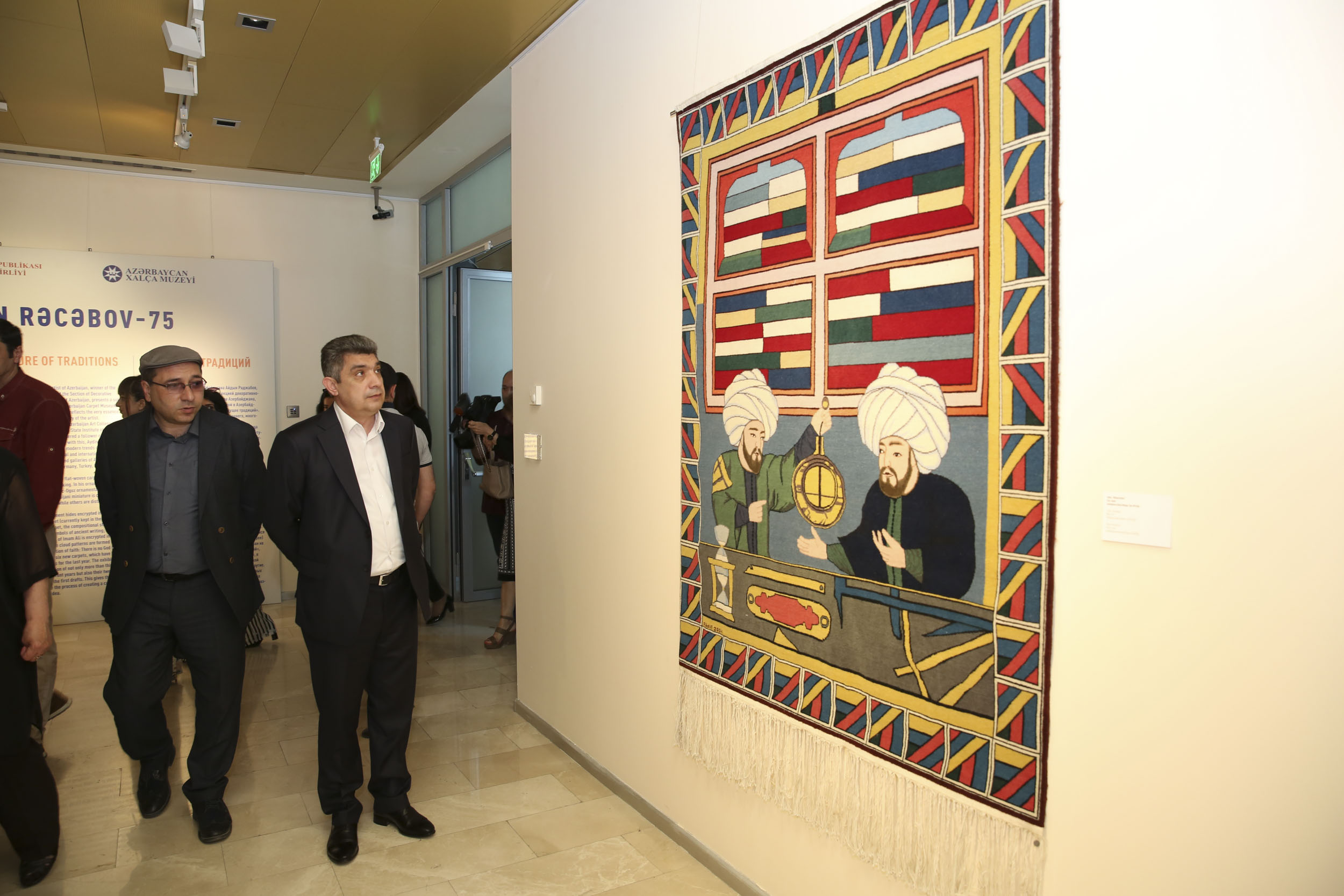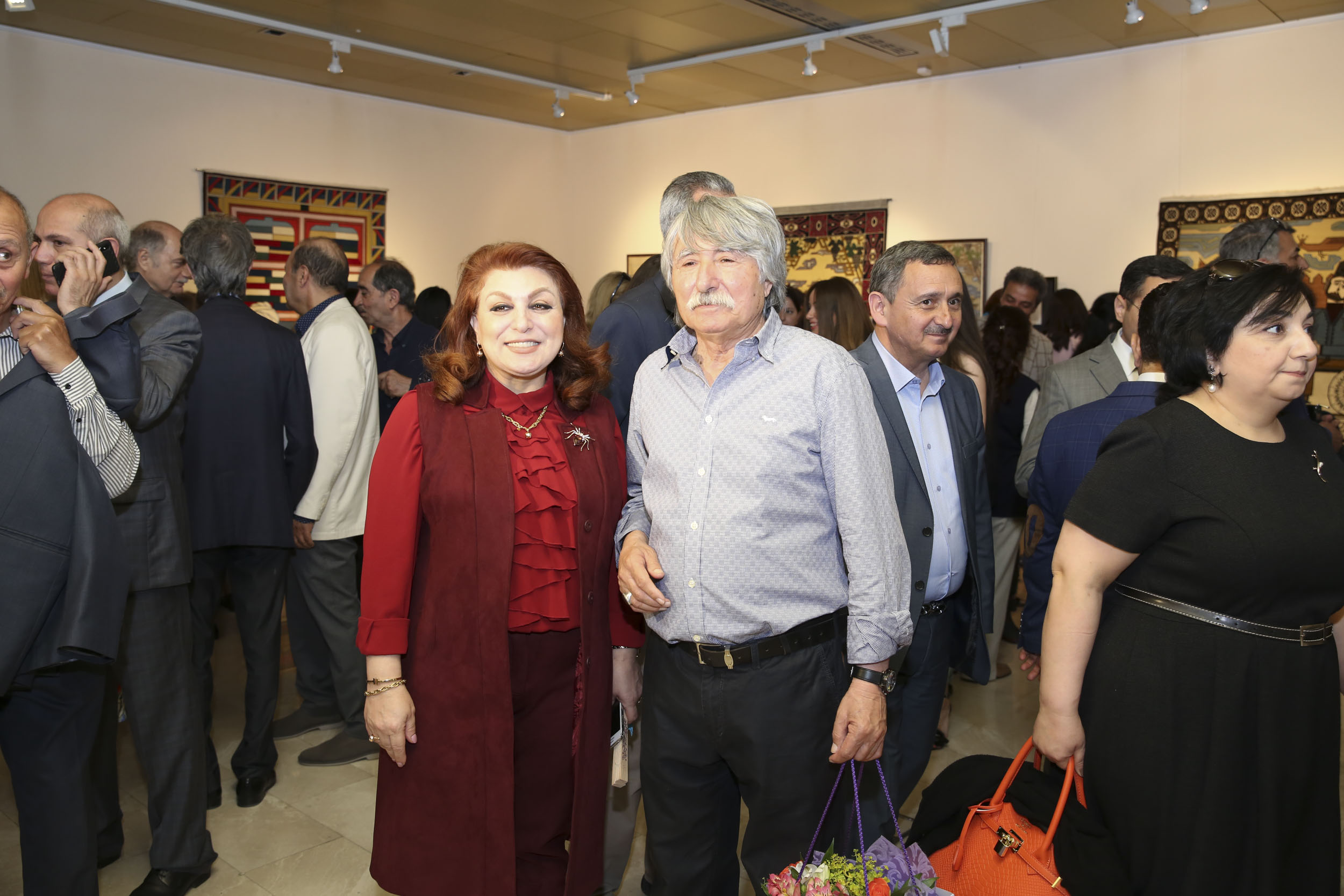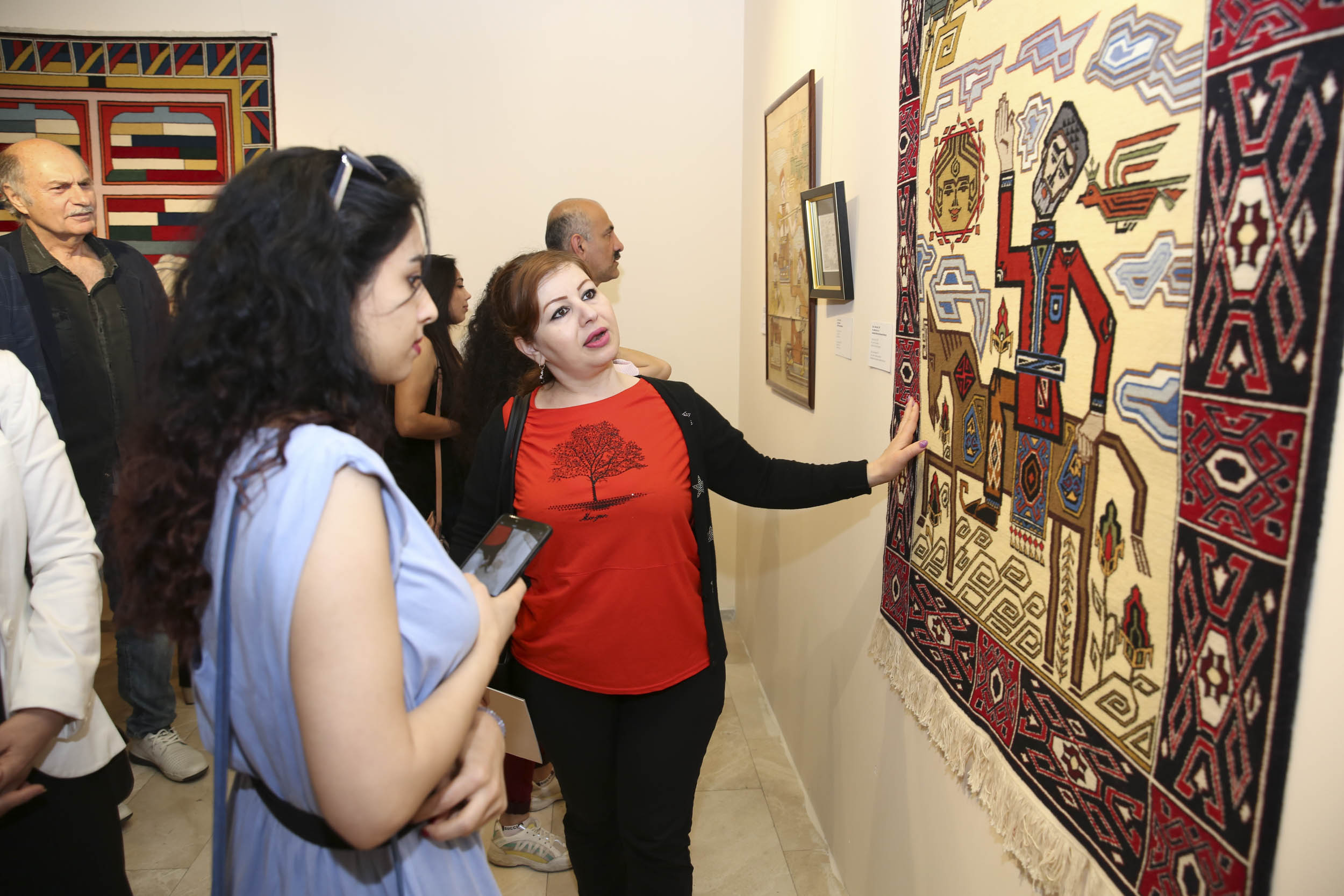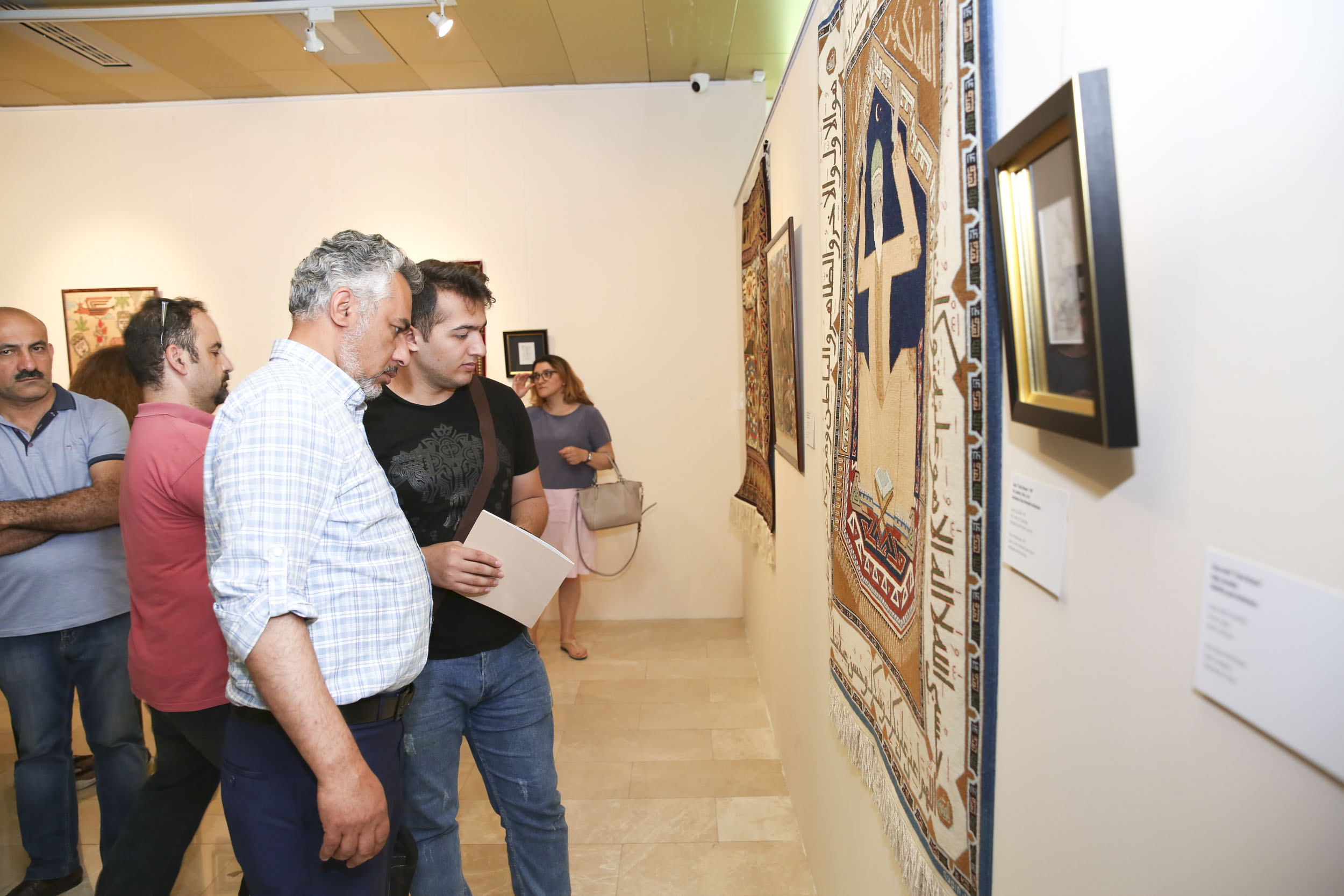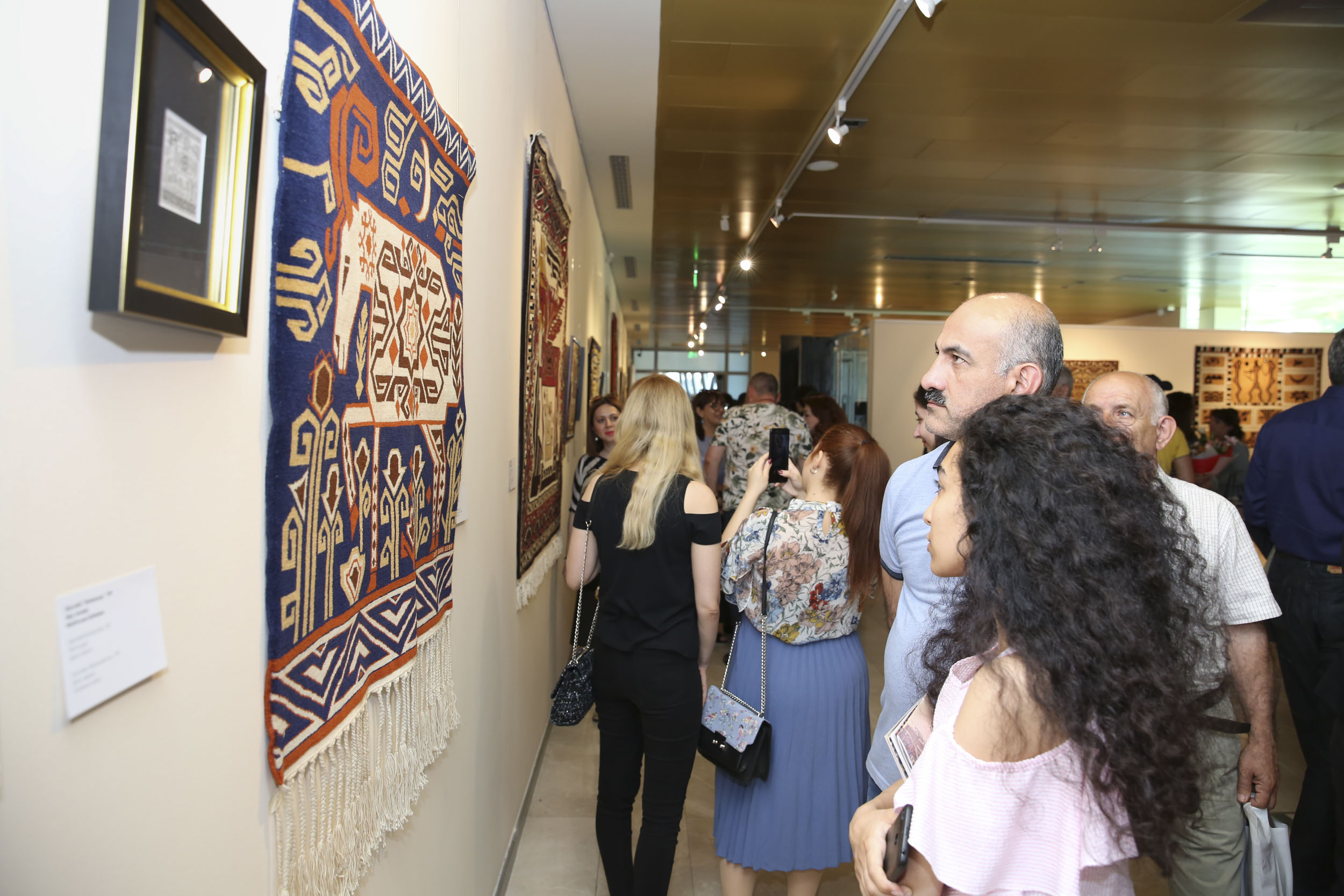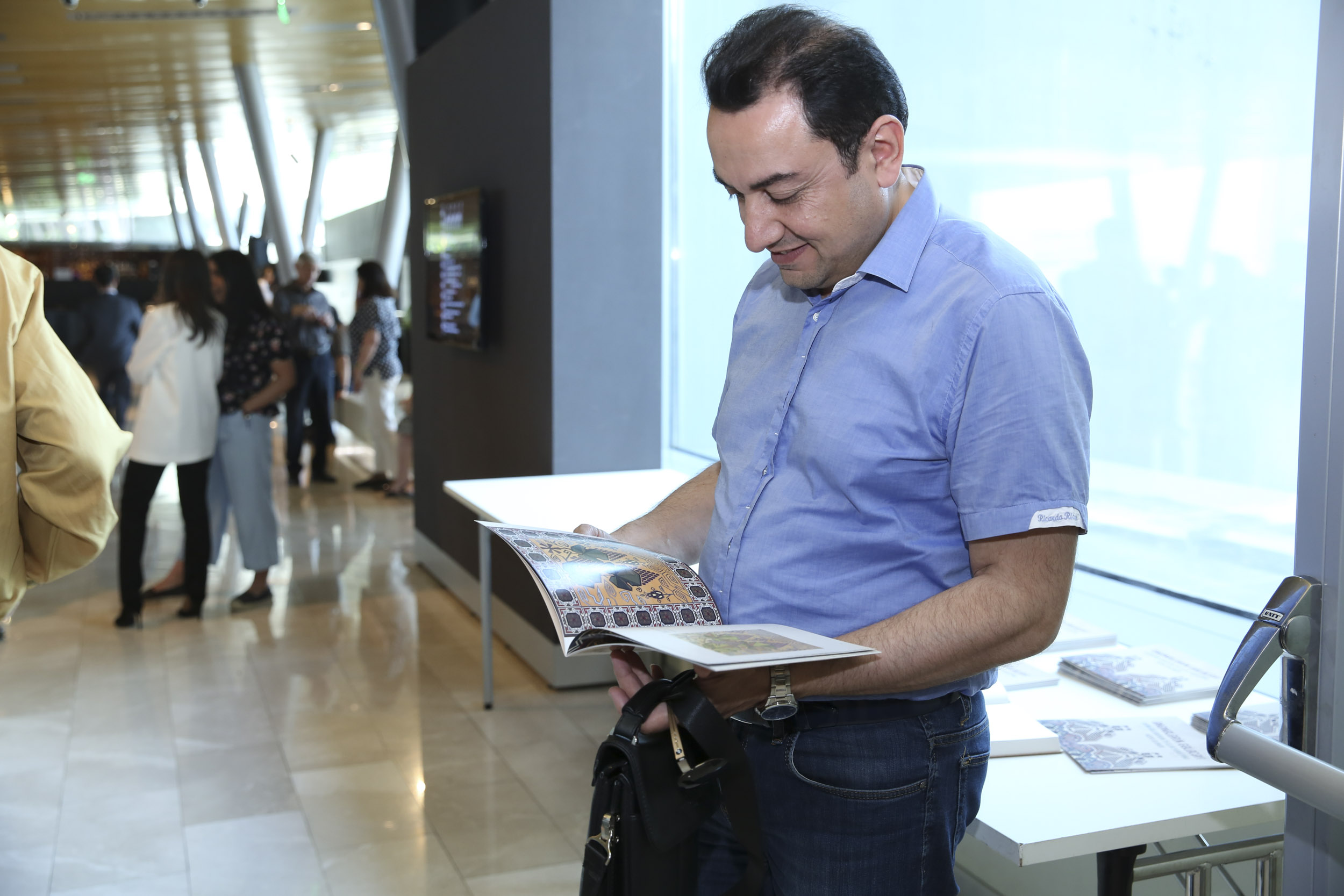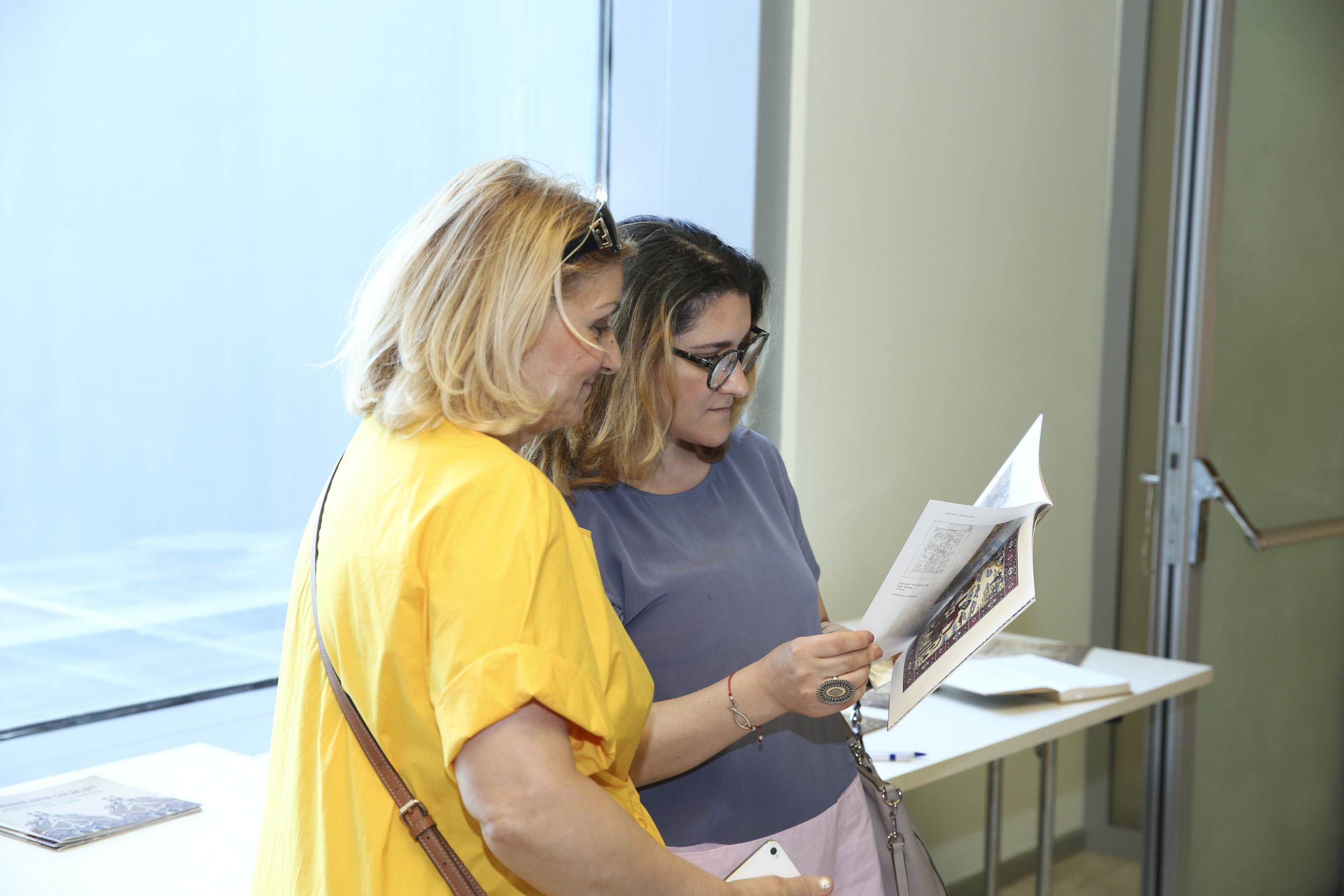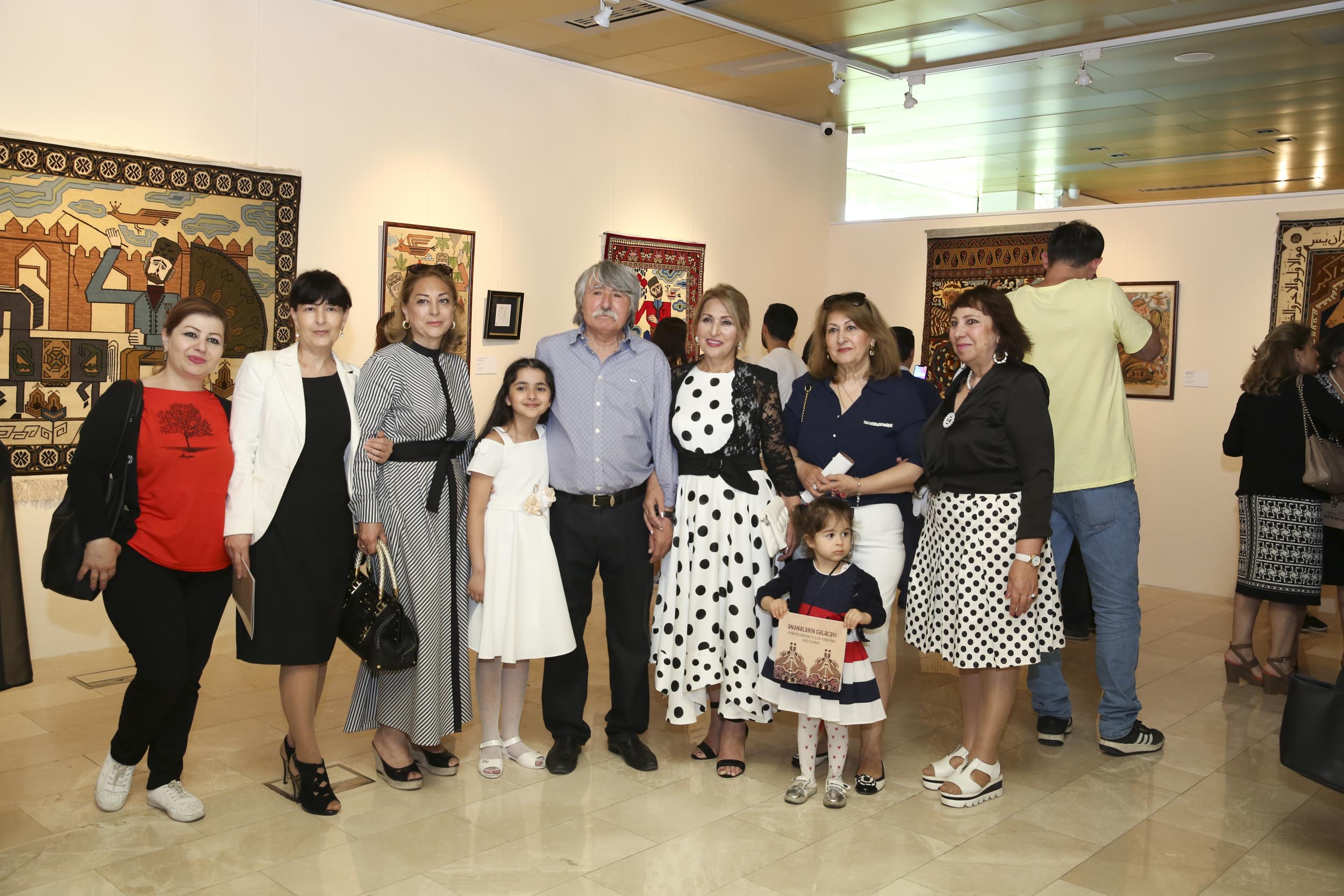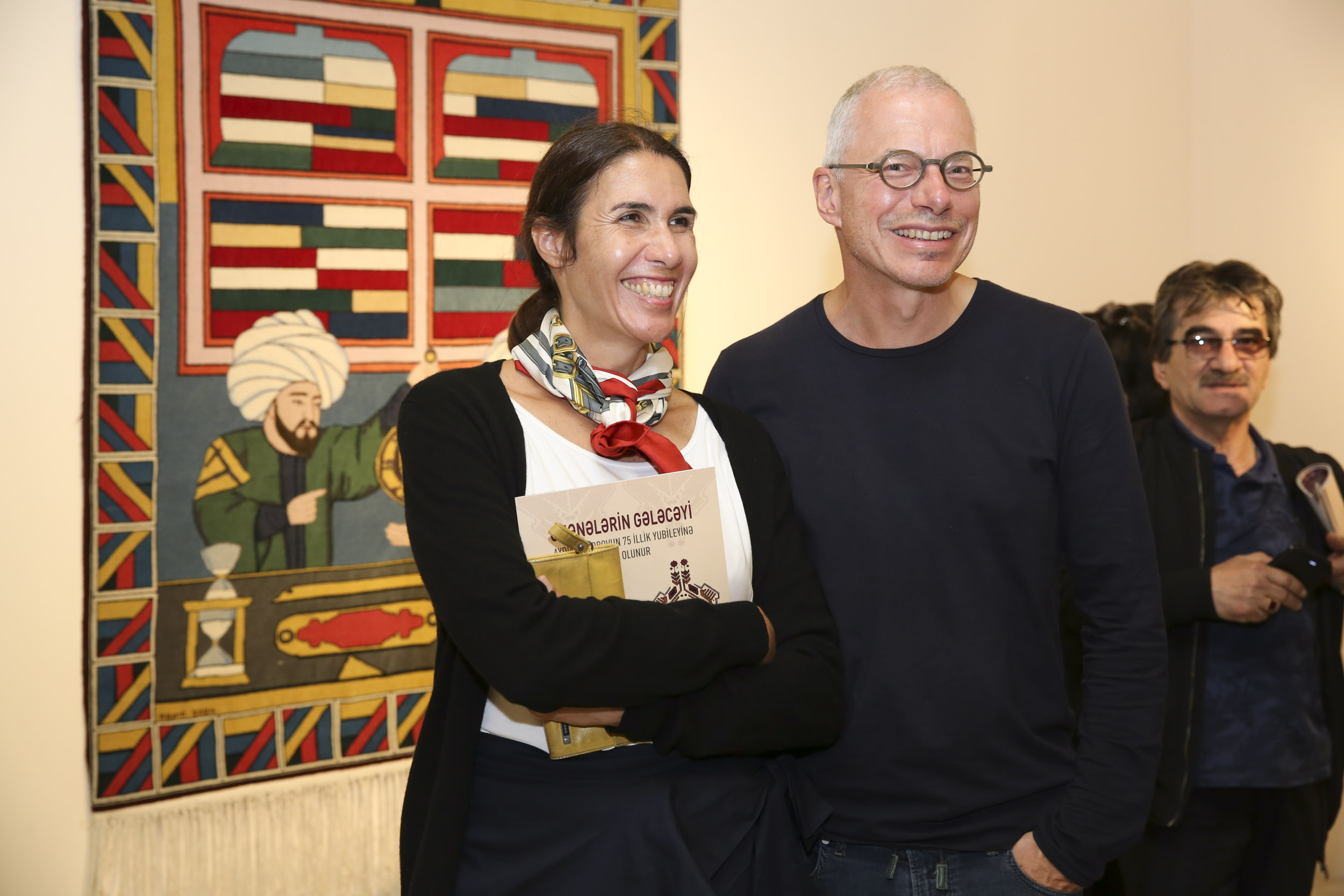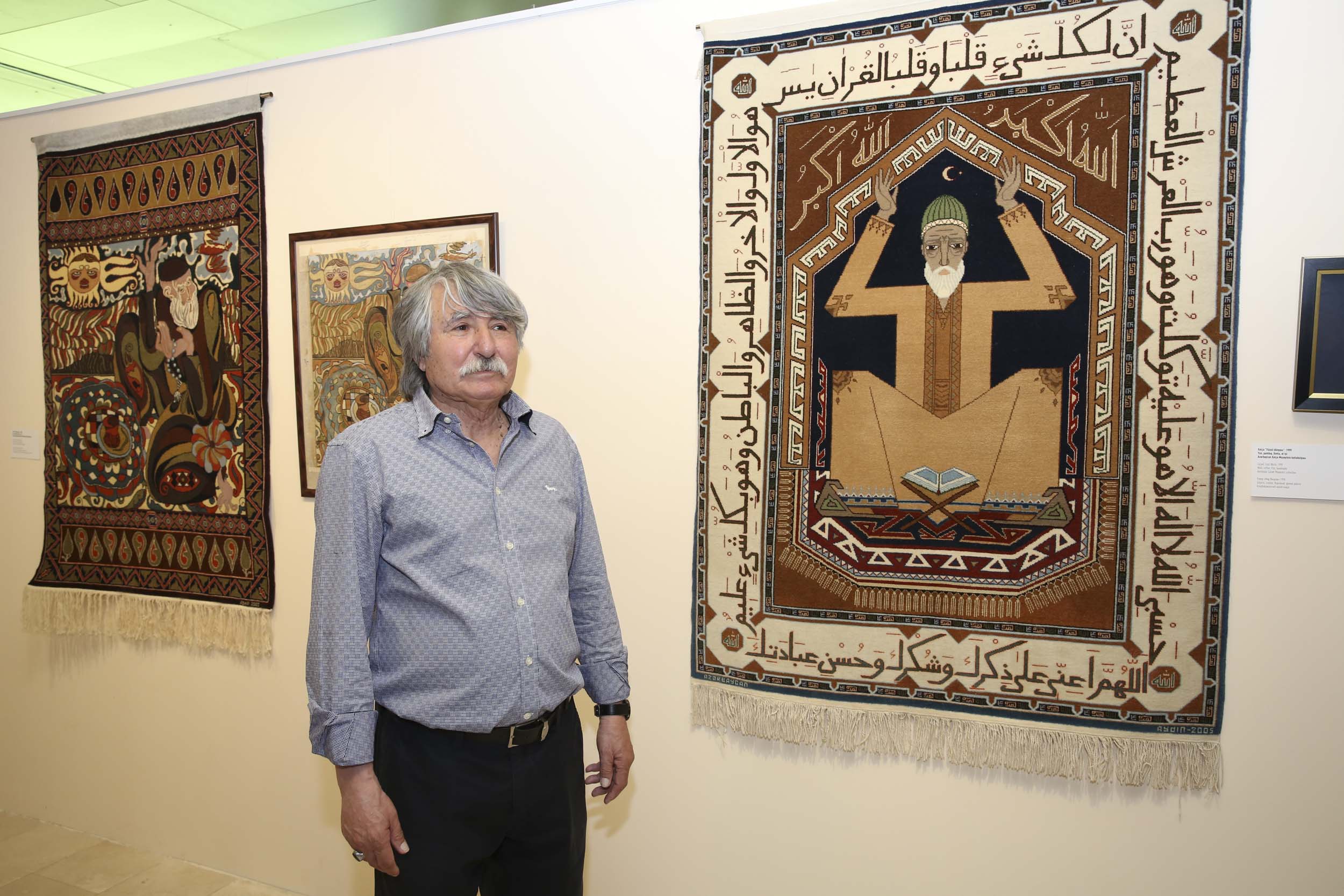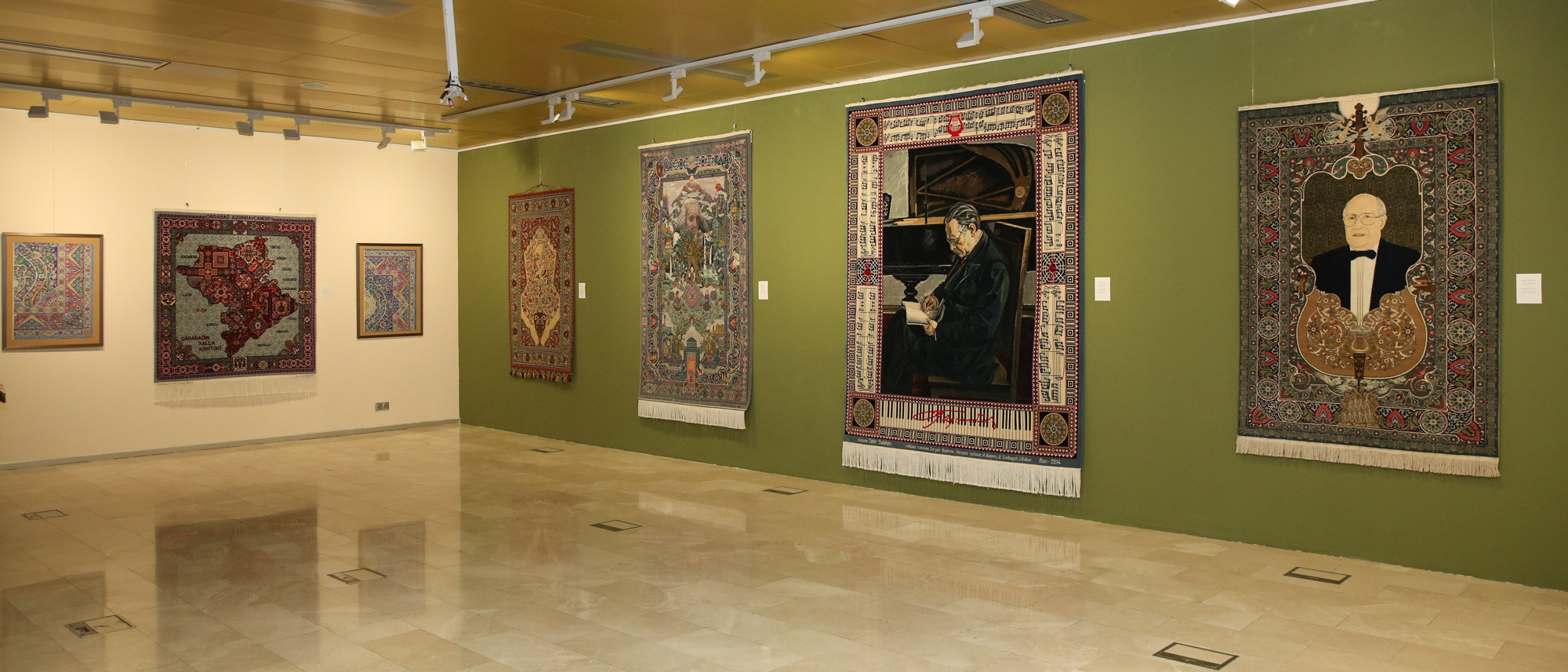Aydin Rajabov’s exhibition at the Azerbaijan Carpet Museum
On May 24, Aydin Rajabov, Honored Artist of Azerbaijan, winner of Soltan Muhammad Award, Head of the Section of Decorative Applied Arts at the Union of Artists of Azerbaijan, presented his solo exhibition Future of Traditions within his 75th anniversary at the Azerbaijan Carpet Museum.
Speaking at the opening ceremony, Shirin Melikova, Director of the Azerbaijan Carpet Museum, Chair of ICOM Azerbaijan National Committee, told about the exhibition concept, which includes a retrospective of Aydin Rajabov’s work over the last 20 years and provides an opportunity to review the dynamics of his creation from sketches to woven carpets. She highlighted the number of his works devoted to Absheron and their unique aura and thanked Aydin Rajabov for his longstanding and productive cooperation with the museum as a consultant.
Galib Gasimov, Head of the Department of Fine and Decorative Arts of the Ministry of Culture, told guests about the gift – a short movie that narrates about his life and oeuvre – prepared for Aydin Rajabov’s anniversary by the State Art Gallery’s staff.
Aghali Ibrahimov, Secretary of the Union of Artists of Azerbaijan, People’s Artist, noted versatility of Aydin Rajabov’s oeuvre. Salkhab Mamedov, Vice-Rector of the Academy of Arts of Azerbaijan, Secretary of the Union of Artists, People’s Artist, valued Aydin Rajabov’s fresh vision in the ancient carpet-making art.
Mammedhuseyn Huseynov, Professor of the Academy of Arts of Azerbaijan, Honored Artist, told about his long friendship and creative collaboration with Aydin Rajabov.
Speakers emphasized the artist’s achievements in domestic applied arts and congratulated him. And he, in turn, thanked them for their kind words.
Aydin Rajabov, a graduate of the Azerbaijan State Art School named after A. Azimzade and the Azerbaijan State University of Arts named after M.A. Aliyev, is rightfully considered a follower of the artist and researcher Latif Karimov’s school. Aydin Rajabov’s creativity combines both tradition and modernity.
The artist’s carpets are preserved in museums and galleries in Azerbaijan and abroad. He actively uses traditional Turkic-Oguz motifs in his ornamental work. The influence of the medieval Azerbaijani miniature is clearly traced in some of his narrative carpets, while others are distinguished by a geometric design.
For this exhibition, the artist has prepared six new carpets, which have been woven based on his sketches for the last year. In total, the exhibition will display more than thirty carpets and carpet products of different years, as well as their twenty-seven sketches, including the first drafts.



